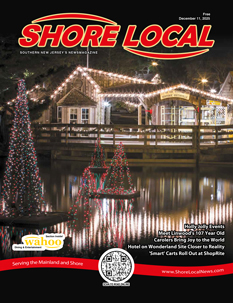By Douglas Keefe
of Beachcomber Coins
I’ve written several times about avoiding coin scams that occur when companies take out large ads promoting special, limited edition coins and sets. And TV infomercials are another source of bad deals for the unsuspecting public. People bring these in all the time and are greatly disappointed to find they are worth a fraction of what they paid. But, some customers with currency this last weekend reminded me of what was a real low-key scam that probably netted the perpetrators a windfall years ago.
On Saturday, a couple came into the Egg Harbor Township office with a collection that was her dad’s, also with an envelope containing “Barr bills”. Neither knew what they were or why he had saved them.
A little background, and then the scam: The terms “Barr dollars” or “Barr bills” refer to the one dollar bills signed by Joseph Barr who was Secretary of the Treasury from Dec. 21, 1968 until Jan. 20, 1969, the shortest term of any Secretary of the Treasury. His signature appears on series 1963-B one dollar bills. Remember, currency is dated different then coins with the date representing when the design was first used and the suffix letter added and changed every time a Treasurer or Secretary of the Treasury changed and had their signature applied. Although Barr was in office for only a month, there were 458 million notes printed with his signature. (That’s a lot of paper).
Now for the scam: There was a lot of publicity regarding Barr’s short tenure in office. Naturally people feeling notes with his signature would be valuable, started hoarding them in anticipation of a big payday. Well, to fuel that activity, some enterprising individuals (that’s a fancy name for crooks) took out ads in the classified section of newspapers around the country under the “Wanted to Buy” section offering to pay up to $1000 for Joseph Barr signed dollar bills. To obtain a list of Barr dollars and the price that would be paid, people were to send $5 for the list. To the best of my knowledge, either lists were not sent or else the lists contained description of notes that did not exist, hence no payments were ever made and someone received a lot of $5’s for lists that were worthless. However, knowing offers were out there to pay for Barr dollars, even though no one ever benefited from those ads, this perpetuated the opinion that Barr dollars were valuable. Sixty years later the legend persists.
So, do Barr dollars have any value whatsoever? A retail price of an uncirculated note for someone who wanted an example for their collection would be around $2.00 to $2.50. A star note (remember a star note is a replacement note for one that was faulty and has a star at the beginning of its’ serial number) will be in the $4.00 to $5.00 range, neither of which are budget busters. As for Barr dollars that have been used, just go ahead and spend them as they have a negligible premium value.












